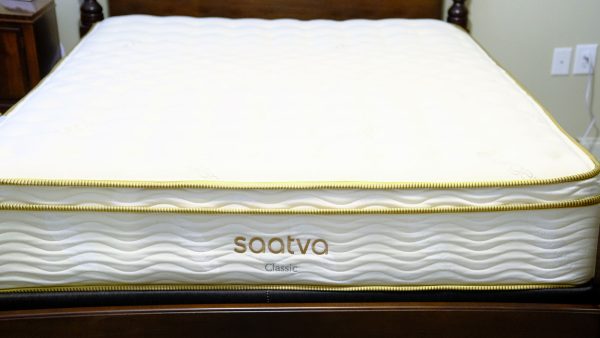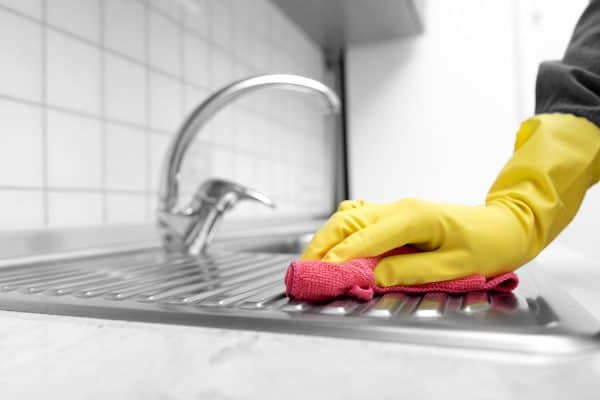White comforters look beautiful and can brighten up a room. They can also be a part of any bedroom decor scheme, making them versatile and valuable. But one drawback is that they often turn dingy and yellow over time. How can you return your comforter to its former bright white glory? We've researched this topic and have come up with the best ways.
Try to use the following products when you wash your comforter:
- Whitening laundry booster
- Vinegar, baking soda, and lemon juice
- A bluing agent
There's a lot to consider when taking care of your white comforter. That's why we've put together this guide to help you think through all of your options. Please keep reading for more details on keeping your comforter clean and bright!
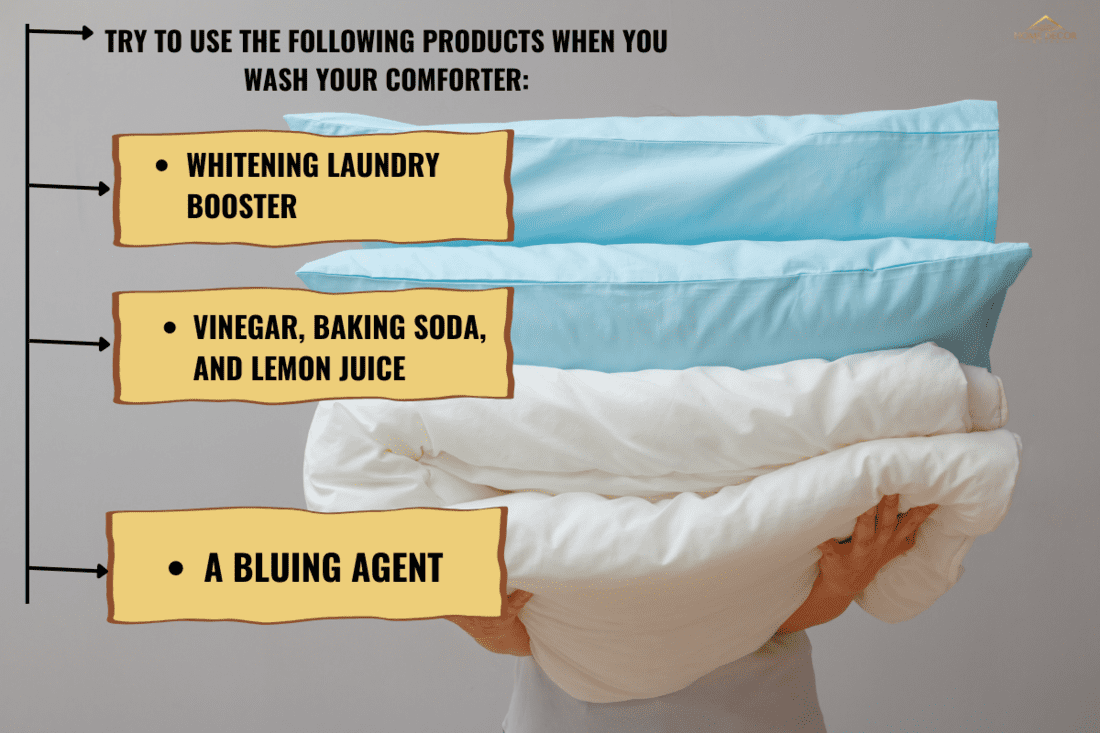
Why Did My White Comforter Turn Yellow?
Before we figure out how to make your comforter white again, it might help to understand what made it look dirty in the first place. Of course, there are some obvious ways your comforter turns yellow, like spilling food or drink on it. But there are two other less obvious reasons for you to be aware of.
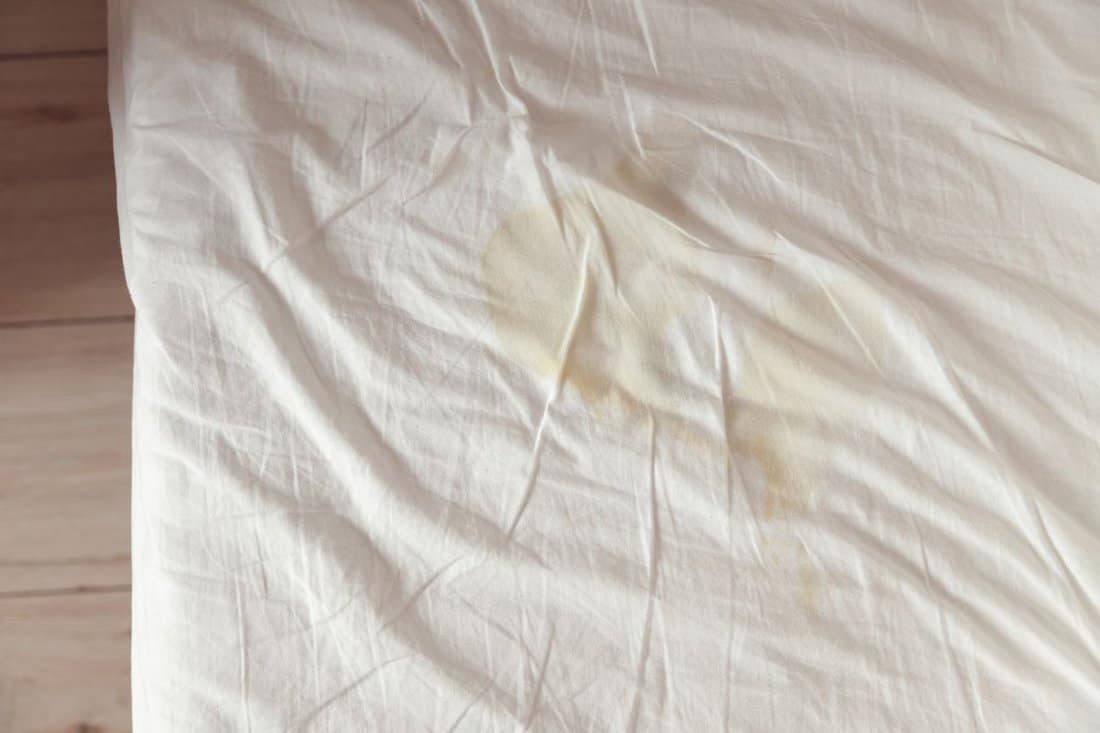
We may include affiliate links and curated AI content to highlight top design styles.
Bodily oils and sweat
The primary reason the comforter is turning yellow is because of a build-up of body oil and sweat on the fabric. Though you don't always recognize it, your body is producing sweat while you sleep. These oils are necessary to keep your skin healthy instead of drying out completely.
However, they can wreak havoc on your comforter if they're allowed to build up. Think of the other things that are on your skin: lotion, soap residue, and other body products. Plus, your body is shedding dead skin cells constantly, which can change the color of your comforter over time.
Detergent residue
If you use a sheet underneath your comforter but it's still turning yellow, it might be because of your laundry detergent. Some popular detergent brands use chemicals, particularly those with heavy scents -- that can turn your comforter yellow. Though you might not notice it immediately, it can happen to white linens over time.
Or, you might be using too much detergent. If your washing machine can't rinse it all off in the time it takes to wash it, the detergent will turn the comforter yellow. Even if you decide to use a different detergent, make sure to wash it as often as you should.
For a deeper discussion on why your bedding turns yellow, read this article next: "Why Do My Bed Sheets Turn Yellow?"
How Do You Wash A White Comforter?
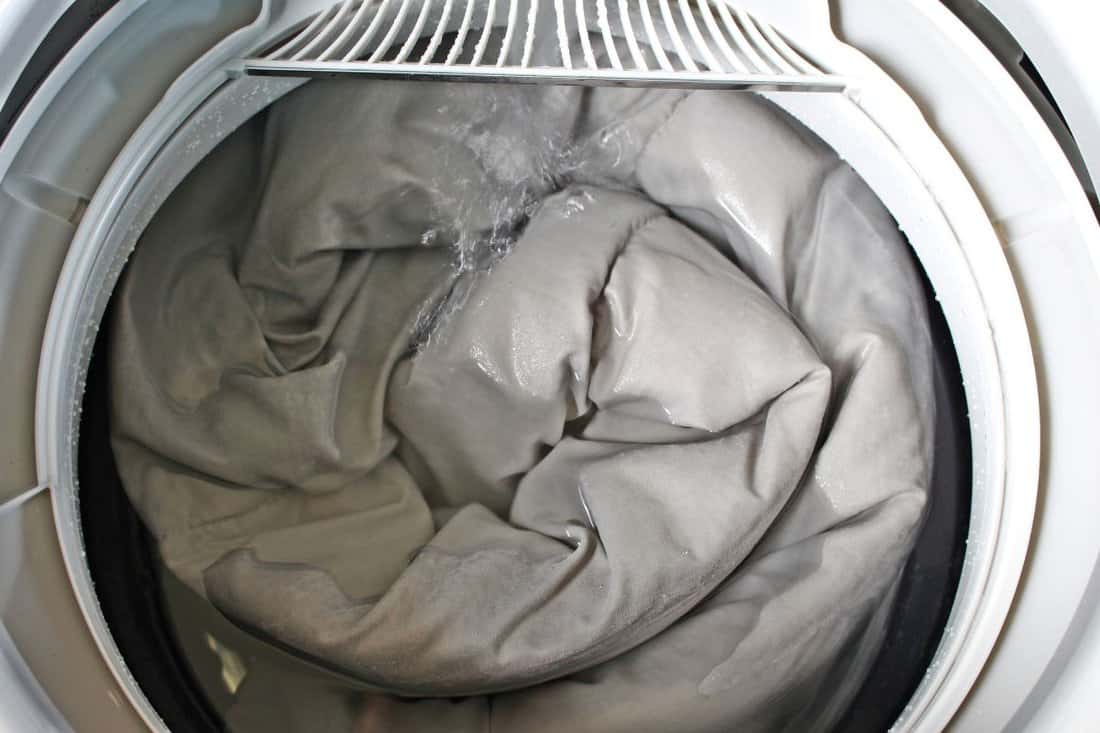
Since most yellowing happens when sweat and body oils build up over time, washing it frequently can reduce damage. Washing a white comforter isn't much different from washing other white fabrics, except it is probably big enough to be washed by itself. In fact, you'll want to make sure your machine is big enough to hold it. The comforter should take up no more than three-quarters of the available space. Pay attention to the label: if it's acceptable, wash it using warm water since you know no other fabrics will bleed on it.
If your comforter has turned yellow over time, try using slightly less detergent than you normally would. Instead, add half of a cup of white vinegar to the load. Just like the step above, vinegar will work to loosen the stains. Or use a less harmful detergent such as Le Blanc Linen Wash, designed to keep linens bright and fresh.
Click here to view this detergent on Amazon.
After you wash the comforter, consider drying it in the sunlight. Sunlight has some natural brightening properties that can make your comforter sparkle.
How Often Should You Wash Your Comforter?
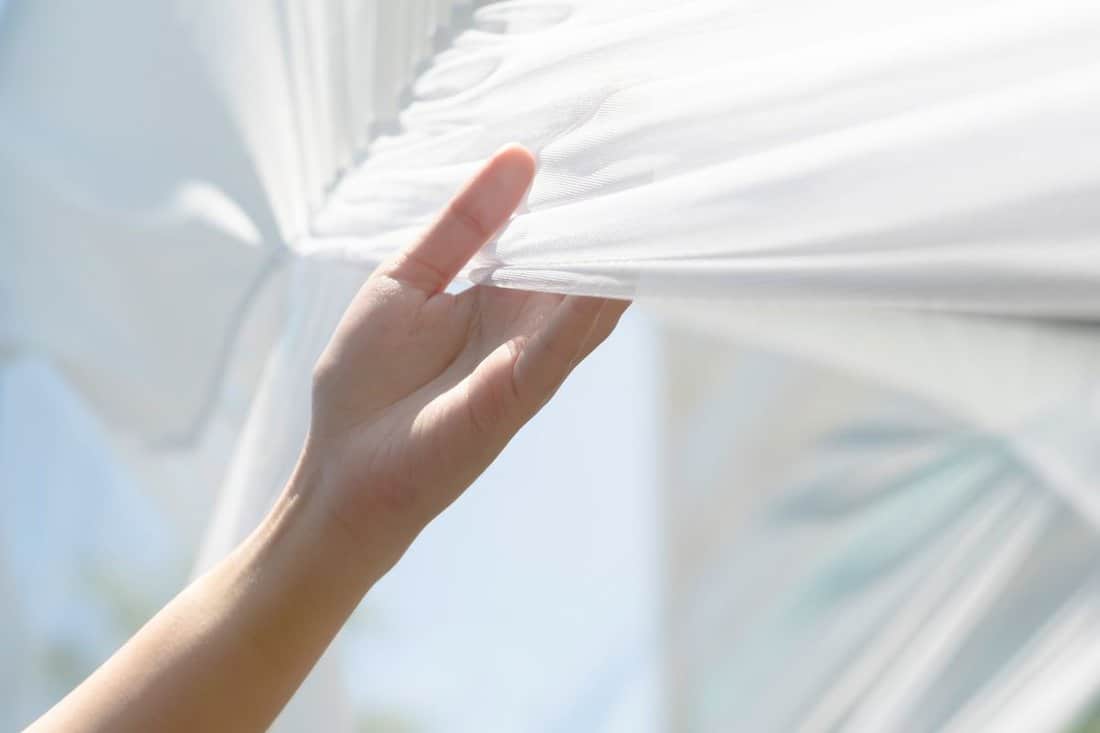
Generally, comforters only need to be washed a couple of times a year. Since you most likely use a sheet between your body and the duvet, you don't touch it as often as the actual sheets. Also, washing your comforter too often can wear it down. If you don't use a sheet under the comforter, you should wash it twice as often.
However, if you're dealing with a white comforter turning dingy, plan on washing it once a month. White is more likely to show dirtiness more clearly than other colors. You'll do yourself a favor in the fight against yellowing if you don't let the sweat and bodily oils build up for too long.
Best Methods
Here are the best ways to turn your dingy comforter back into a bright white comforter. But first, a word about using bleach to fix the problem.
Should I use bleach on my yellowing comforter?
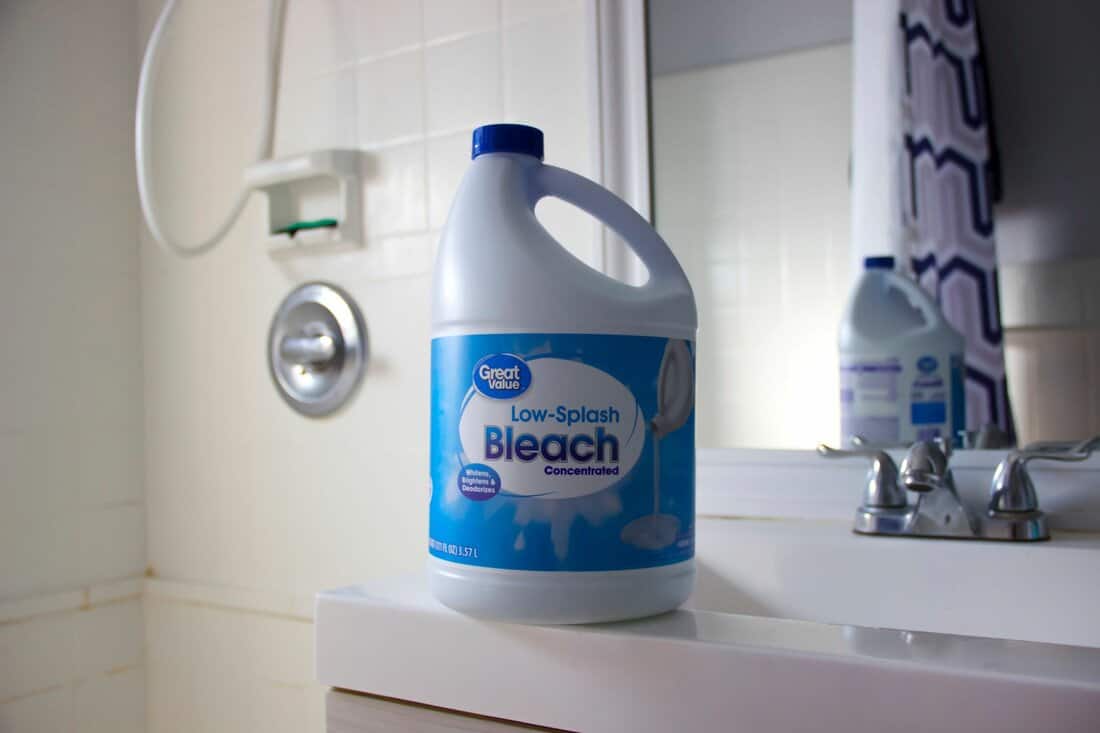
Common sense might say to use bleach on your formerly white comforter. Yes, bleach is designed to eliminate stains and keep materials white. But bleach has a chemical reaction with things like sweat, bodily oils, and other elements that end up on the comforter. Thus, it turns the already dingy comforter into a more yellow color.
Whitening laundry booster
There are several different whitening laundry boosters on the market. These products use an added optical brightener that remains in the fibers of the comforter after the wash. The additives absorb UV light and then give off a blue tone, which offsets the comforter's yellow color.
Many of these products suggest adding them to your normal laundry detergent and running the washing machine like normal. But if you have severe yellowing, you can presoak the comforter before washing. Mix the booster in water according to the instructions on the box. Then, soak the bedding in it overnight before washing it with your normal detergent.
OxiClean is probably the most popular white laundry booster available. But you might prefer other products, like the White Brite shown below.
Click here to view this booster on Amazon.
Click here to view this booster on Amazon.
Vinegar, baking soda, and lemon juice
Don't like the idea of adding another chemical to your comforter? Then this natural solution might be for you! Mix a half cup of white vinegar with hot water in a big enough container to fit your comforter. Soak the comforter in that solution for about an hour.
Then, wash it like normal, except add a half cup of lemon juice or baking soda to the load. These two substances have some strong stain-fighting abilities. But also, either of them will eliminate the offensive vinegar odor.
A bluing agent
An alternative to laundry boosters is the act of bluing your laundry. Bluing basically has the same effect on your white comforter as the whitening booster but uses fewer chemicals and is less harsh. Essentially, you're very lightly dying the comforter a blue color to offset the yellow color. Be careful: misusing the bluing product will give your white comforter a bluish tint.
Click here to view this product on Amazon.
Click here to view this product on Amazon.
Did you know there are sixteen types of comforters? Check out this article for an explanation of each: "16 Different Types Of Comforters."
In Closing

Your white comforter might be turning yellow and dingy because of bodily oil and sweat or detergent residue. Use a whitening laundry booster, a mixture of vinegar, baking soda, and lemon juice, or a bluing agent to return it to its former glory. Whatever option you choose, we hope this article has helped you feel good about your comforter again!








